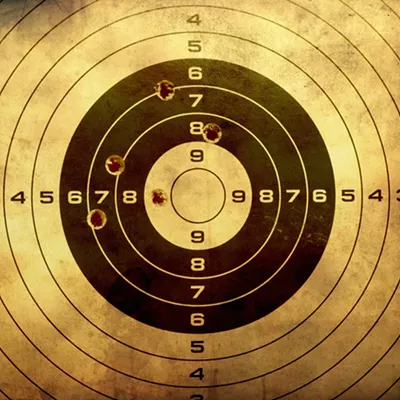Most issues regarding safe schools these days involve discussions about teen violence, gun control and evacuation plans. But as the potential for school metal detectors and security guards remains, the state of Idaho and its school districts are involved in another, less threatening, but equally charged debate about school safety.
"The basic bone of contention," says Bob Cooper, spokesman for Idaho Attorney General Lawrence Wasden, "is that the constitution says the [Idaho state] legislature must provide a system of 'free and thorough education that is conducive to learning.'"
To the school districts, that means the legislature is responsible for funding that system, which means it needs to provide financial aid for facility upgrades and maintaining building codes. The state of Idaho doesn't agree. Thirteen years ago, about 50 school districts throughout Idaho sued the state, demanding that it pay for nearly $750 million worth of safety needs in their facilities.
What's ensued has been more than a decade of litigation, the most recent being civil complaints filed by the state against seven of its school districts, demanding the schools fix what the state defines as "unsafe conditions" within the existing funds in their budget. The schools, which have been the plaintiffs in the lawsuits, are now in the defendant's seat.
Amendments to house bills and the constant rewriting of building and safety codes have created a quagmire of unbelievable proportions. Many of Idaho's schools are years behind in building safety codes.
"The kids who started kindergarten when the [original] lawsuit was filed are now going to college," Cooper says. "In 13 years, the litigation has never been able to repair a school. The schools are seeking state funding for buildings from the legislature, and the court cannot make the legislature fund this."
The Lake Pend Oreille School District (LPOSD) serves about 4,000 students in and around Sandpoint, and it is among the seven school districts being sued by the state.
"My personal feeling," says Steve Battenschlag, chief operating officer for the LPOSD, "is that it should never be the role of the legislature to build schools. But you get into the issues of what safety is. [The state] is coming from a position of an imminent [threat to safety], and I come from a position of air quality or inadequate lighting."
Mike Gilmore, the deputy attorney general who is handling the matter, says there is a difference between an "unsafe condition" and a "safety upgrade." While the school districts seem to want the legislature to help them fund safety upgrades, the state is only concerned with unsafe conditions, which, it says, need to be abated immediately.
"The legislature passed the Idaho Uniform School Building Safety Act in 2000," Gilmore explains. "It put the school districts under the Division of Building Safety (DBS), which now has responsibility to inspect schools and enforce the safety requirements."
Under the DBS, if a school's bleachers are determined to be an "unsafe condition," the district must abate that condition, which means as little as taking the bleachers down without repairing them or as much as building new ones. Gilmore says taking them down wouldn't cost the school district much money.
But Battenschlag says that won't go over well. "I'm not going to talk to the parents whose kids play football and soccer and [tell them] they've got no bleachers to sit in," he says.
But bleachers aren't the only problem. In early September of this year, Battenschlag testified in court that LPOSD had estimated safety needs of $15 million to $18 million. This estimate, he now says, is not necessarily accurate.
Both Gilmore and Battenschlag admit they don't know how many unsafe conditions exist in the schools, because neither side can agree on what an unsafe condition is.
"The DBS has rule-making authority to adopt safety and building codes," Gilmore explains. "They do this upon a uniform occupancy code, and they take their definitions from the Uniform Code for Abatement of Dangerous Buildings."
It sounds clear enough, but as Gilmore himself points out, these codes and rules are constantly changing.
"It will be updated again next month or so, and was last updated in 2001," says Gilmore, explaining that as design and engineering techniques change, so will the codes and rules that regulate them. "A lot of schools don't really understand this. Superintendents aren't hired to understand building safety; they have backgrounds in education, not building. They don't understand what's going on."
Battenschlag begs to differ. "If [the state] has a written definition [of unsafe conditions], I'd like it. No one in the DBS is an engineer. I have yet to get a report saying what is 'imminent.' Let's think of it this way; if we're going to wait until safety issues become 'imminent,' then they are saying they won't be proactive in preventing safety issues."
Gilmore says it's difficult for the state to help the school districts abate unsafe conditions when they won't cooperate or communicate. In early September, Wasden's office wrote letters to 13 Idaho school districts, asking them for information regarding previously determined unsafe conditions in their facilities. Of the 13, only six responded to the attorney general that they had properly "abated" the unsafe conditions. Five of the districts, including LPOSD, did not respond; two districts responded but had not abated the conditions. The state filed suit with those seven school districts.
"They have their own department doing this," exclaims Battenschlag. "We've been doing this dance for 13 years. They have their own department [the DBS] coming in and inspecting and signing off on stuff they say they have no problem with. Why are they suing us?"
It's difficult to believe that in 13 years of litigation, neither side can agree on a definition for unsafe conditions, let alone who should pay for them. Both Gilmore and Battenschlag admit that neither the state nor the school districts have suggested mediation.
Where's The Money? -- The state insists that all "unsafe conditions" defined by the DBS need to be abated with the school districts' own money. If they aren't, the state can sue, which may require a judge to enact an Educational Necessity Levy (ENL). An ENL is an automatic property tax for a period of five years, limited to the amount necessary to abate the unsafe condition.
Will school districts need to be sued in order to abate their facilities' unsafe conditions? Battenschlag claims it may have come to that, as there aren't enough funds in the LPOSD budget to include abatement of all facility safety needs.
"Over 85 percent of our budget is for wages and benefits," Battenschlag explains. "The remaining money [is split between] health benefits, utilities, textbooks and curriculum, and then, if there's any money left, you're supposed to go in and address capital investment." Battenschlag says their budget for facility safety and maintenance is "designed to change a light bulb, not rewire a building."
The state says that's what bonds and levies are for. Gilmore says that's the way the system is set up, and that school districts are no different from other state-funded entities like city departments. But school districts know that asking people to increase their property taxes is always met with resistance, especially in places like Pend Oreille County.
"Our community has a high property value but a low per capita income," says Battenschlag, who claims that the Lake Pend Oreille School District gets less from its taxpayers than many other neighboring districts. Still, the LPOSD hasn't tried to pass any levies or bonds recently. Currently the LPOSD has a supplemental levy of $2.2 million annually, which expires this year. Most of that money goes toward wages, benefits and athletics.
"We've gone through two years of tough times, with people getting laid off and cuts in our funding," Battenschlag says. "There have been a lot of folks who've written letters to the editor saying they are overtaxed and that [there are] bond issues they shouldn't have to pay for. There's been, quite frankly, a big issue about how much the school district is charging the community."
Gilmore says the LPOSD has chosen to budget for teachers' salaries and other programs rather than keeping its facilities up to building codes.
"Districts spend significant amounts of money on [programs] that aren't required, like sending their football team all over the Northwest," Gilmore says.
Though 13 years of litigation has created a complicated web of regulations, codes and compliance issues, one issue both sides agree on is that it hasn't done any favors for the students.
"If the only thing we get out of 13 years of litigation is that the state can sue us if we don't comply with their definition of safety, then that's pretty sad," says Battenschlag. "What we should get is how the schools can work with the legislature to help address these issues, not to say who's right or wrong. We've failed our kids because we haven't been able to get there."
Publication date: 10/16/03















